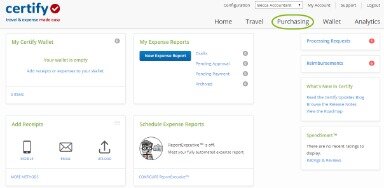Control Account Meaning, Purpose Step by Step Examples
Learning in the Digital Age
06/10/2022How To Find The Right Home Decoration Ideas For Your Specific Product
07/10/2022Contents:


A creditors control account refers to a ledger account that indicates the sum of the creditors’ transactions within the master ledger. On the other hand, a stock control account depicts the total value of the stock items. A control account in accounting is defined as a summary-level account in the general ledger. The account contains the sum total of individual transactions from subsidiary ledger accounts. Control accounts are typically used to summarize the accounts payable and accounts receivable ledgers. Those ledgers usually contain a vast number of transactions that should be separated into different subsidiary ledgers rather than clogging up the general ledger with too much information.
It contains aggregated total for the transactions that are posted in the subsidiary ledger. It is also called a controlling account because it enables us to perform reconciliation control on the ending balance. The control account is part of the double entry system and the subsidiary ledgers are for analysis only. If the trial balance is not balanced, it indicates a mistake in the transaction recording. To discover this mistake, one must go through all of the transactions for the whole year. Now, if the company is tiny, it will be simpler to tell the difference.
- There are many benefits to using these accounts as part of your accounting system.
- Because the control account only reviews the end balance, there is less risk of miscalculation.
- Simply we can say that it tells how much business owes to the suppliers of a business at a particular time period.
- Because control accounts summarize information in subsidiary ledgers, they should always remain in balance.
- The account contains the sum total of individual transactions from subsidiary ledger accounts.
When monitoring your business’s general ledger, you may have an accounts receivable control account. The control account will only show you the accounts receivable balance after all calculations have been done. It will include end amounts for things like total credit sales, collections from customers, and the total amount still owed. Most commonly, control accounts are used for two areas within a company. Rather than clutter up the general ledger and financial statements with all of the details, they are kept in a control account.
Free Debits and Credits Cheat Sheet
For a large business, where there are too many transactions to be managed by only one person, subsidiary ledgers such as the accounts receivable and accounts payable ledger are opened. The bookkeeper would need to collect information about the balance of both ledgers to determine the trial balance for the account. This process is made more accessible by having control accounts for each subsidiary account listed in the general ledger. A control account is a general ledger account that contains the summarized amounts of transactions made within the business. Also, this account is called a controlling account since it promotes the performance of reconciliation control concerning the ending balance.

It helps in strategic analysis of the balances as there is no much detail. Double Entry Bookkeeping is here to provide you with free online information to help you learn and understand bookkeeping and introductory accounting. The closing balance of an account may be computed if the beginning balance of the account, as well as the amount of deductions and additions entered into the account, are known. The investor relations department is a division of a business whose job it is to provide investors with an accurate account of company affairs. The Sarbanes-Oxley Act is a piece of regulation drafted to ensure financial reporting avoids any fraudulent activity. Janet Berry-Johnson is a CPA with 10 years of experience in public accounting and writes about income taxes and small business accounting.
Recommended Articles
They are summarized and posted to the control account that in turn appears in the GL. In this way, the controlling account really does dictate what appears in the GL and what is reported on the financial statements. Sales ledger control account is also known as debtor control account or Trade debtor control account. It explicits total trade debtors of a business entity at a specific given period. Further, it elaborates the total amount owed by all customers in a given time frame.
Consensus agrees that to maximize firm performance, accounting control systems should be designed specifically to suit the unique business strategies of different entities. A suspense account accommodates the difference between debit and credit. Account Contains Account ReceivableAccounts receivables is the money owed to a business by clients for which the business has given services or delivered a product but has not yet collected payment. They are categorized as current assets on the balance sheet as the payments expected within a year. One account is debit, and another account is credit with a balanced amount. It facilitates prompt preparation of profit and loss account and balance sheet at the end of each period by providing stock figures quickly.
An Example of a Control Account
So, in order to keep things simple, one ledger is kept for Debtors and one for Creditors. Internal controls are processes and records that ensure the integrity of financial and accounting information and prevent fraud. Sales LedgerA sales ledger is a ledger entry that records any sale in the book of records, even if the payment is received or not yet received. It records the sales and the cash when received and the amount owed to the business. Accounting software is designed with control accounts already factored in. When setting up your chart of accounts, you’ll be able to choose the accounts that should go into any control account.

The Ascent is a Motley Fool service that rates and reviews essential products for your everyday money matters. We’re firm believers in the Golden Rule, which is why editorial opinions are ours alone and have not been previously reviewed, approved, or endorsed by included advertisers. Editorial content from The Ascent is separate from The Motley Fool editorial content and is created by a different analyst team.
Bookkeeping
In other words, control account enables us to reconcile the aggregated balance of the subsidiary ledger with the total balance to be used in trial balance. The information posted to the accounts receivable control account and the source of that information are shown in the table below. The control account is considered part of the double-entry system, with only the subsidiary accounts used for analysis purposes.
The total for all the accounts is taken and put into the A/R control account. The balance appears in the general ledger and in financial statements. Control accounts act as a double check on the accuracy of the analysis. The balance of the control account at any time should equal to the sum of the balances of all individual accounts in subsidiary ledger.
Linux Foundation launches new organization to maintain TLA+ – Yahoo! Voices
Linux Foundation launches new organization to maintain TLA+.
Posted: Fri, 21 Apr 2023 13:00:28 GMT [source]
As the name suggests, corrective controls are put in place to fix any issues found through detective controls. These can also include remedying any issues made on accounting books after the audit process has been completed by an accountant. An example of a preventive control would be limiting management’s involvement in the preparation of financial statements. Sometimes it’s helpful for management to be involved since they generally know the company better than anyone.
Control accounts provide a summary of transactions recorded in various subsidiary ledger. Similarly, a control account is also maintained for each of the other subsidiary ledger. The objective of opening a control account for cost ledger is to complete the double entry and to make the cost ledger self-balancing. For example, purchases of individual items of stores appearing in individual accounts in the stores ledger are totaled and posted in Stores Ledger Control Account in the cost ledger as total purchases.
Einstein utilizes purchases and payable control accounts to record his business transaction. Then Einstein makes entries of every supplier within the payable subsidiary ledger. Later, Einstein documents total purchases within the master ledger by crediting the transaction in the payable control account and debiting the transaction in the purchases account. He also assesses whether the total amount in the control account equates with the amount in the individual supplier account to balance the transaction within the subsidiary ledger. The use of accounts receivable and accounts payable control accounts creates an accounting system where only the general ledger is self balancing.
Definition and Examples of Control Account
Companies using a control account typically post balances from the subsidiary ledgers daily to make sure that they’re always in balance. A control account is used to check the numerical accuracy of the balances that are posted in general ledger accounts. It can find out mistakes and errors in personal or individual accounts.
If Jim had any returns or customer discounts, he would also post them in the control account to make sure that the subsidiary accounts and the control account remain in balance. When using a control account for accounts receivable, a variety of subsidiary transactions will be included in the control account balance. Using a control account can guard against fraud, particularly if you have someone else maintain the control account. Entries in the control accounts such as “total sales”, “total purchases” as well as “bank” come from the relevantaccounting journals.

It’s the account that is used to record all credit transactions made in terms of sales. Further, all the related transactions like cash collected from credit customers, discount allowed, provision recorded, and sales return are recorded in the control account. Control accounts speed up the process of producing management accounts information as the control account balance can be used without waiting for the individual balances to be reconciled and extracted. Control accounts are mainly used to help identify errors in the subsidiary ledgers, but the use of them gives a business a number of additional advantages. The subsidiary ledgers are considered a part of the double-entry system. With this method, the control account is for information purposes only and isn’t considered part of the overall system.
Example of purchase ledger control account
Similarly, all the entries regarding credit sales are posted in the account receivable ledger, along with sales returns and discounts allowed. To ensure accuracy of the ending balance for accounts receivables, we obtain accumulated figures for the credit sales, cash received, sales return, and discount allowed to construct the control account. The debtors control account is also known as thesales ledger control account. This name is sometimes used for this account because it reflects the total of the individual sales on credit , as reflected in the sales ledger. This way the ledger only has one accounts receivable account instead of hundreds. If more information is needed for a specific customer, the subsidiary accounts and records can always be reviewed.
Control accounts are part of double-entry accounting, which states that any debit posted to the general ledger will have a corresponding credit posted to the general ledger as well. Typically, as a company grows, so do the number of suppliers and consumers . If we create a separate ledger account for each creditor and debtor, the general ledger and trial balance would grow too large to handle.
- My Accounting Course is a world-class educational resource developed by experts to simplify accounting, finance, & investment analysis topics, so students and professionals can learn and propel their careers.
- If someone needs information about a specific customer, then they can check the subsidiary accounts or records to learn more.
- Control accounts are typically used in larger organizations that have hundreds or even thousands of transactions.
A common example of a control account is the general ledger account entitled Accounts Receivable. Control accounts are needed to assist in the identification of errors that occur within the subsidiary ledgers. In addition to catching errors, control accounts can also help you review the general ledger. When specific control accounts do not balance, you know that they need to be checked. Control accounts are used in the general ledger to summarize activity in subsidiary ledgers. Commonly used in accounts payable and accounts receivable, they report the balance of each ledger.
How to Swing Trade – Investopedia
How to Swing Trade.
Posted: Tue, 18 Apr 2023 14:50:05 GMT [source]
To restore investor trust, it was widely accepted that a new culture was required. Control account makes for a much cleaner and easier-to-read ledger that’s easier for bookkeepers to use and manage. It is a summary account, so there are chances of having an error in this account. Is used for suspicious entries in financials that are not identified when preparing financial accounts.. It provides a basis for reconciliation of cost and financial accounts. The GoCardless content team comprises a group of subject-matter experts in multiple fields from across GoCardless.
So, to trace the balance of the specific party, we need to analyze the subsidiary ledger/party-wise ledger. However, sometimes there can be no match between the closing balance in the control account and the total of the party-wise accounts. In this case, there are three possibilities of errors that include the following.
A general ledger refers to a master accounting document that provides a comprehensive record of all of the financial transactions in the business. A subsidiary ledger is the custodian of the details for the general ledger control account. A control account is mainly used in larger corporations that have hundreds of transactions, and it is also part of double-entry accounting.
The typical bookkeeping boston of activity in a control account is on a daily basis. For example, all payables entered during one day will be aggregated from the subsidiary ledger and posted as a single summary-level number into the accounts payable control account. Those subledgers are totaled for each reporting period, and the totals make up the balance of the accounts receivable control account. In other words, the accounts receivable control account reflects the total amount that a company is owed, while the its subledger shows how much each individual customer owes. A control account integrates and summarizes a particular type of subsidiary account.
But final say on numbers should be in the hands of an accountant, because management may have the incentive to distort numbers to inflate the company’s performance. You have two options for using control accounts and the double-entry system. Financial StatementsFinancial statements are written reports prepared by a company’s management to present the company’s financial affairs over a given period . Account BalancesAccount Balance is the amount of money in a person’s financial account, such as a savings or checking account, at any given time. Furthermore, it can refer to the total amount of money owed to a third party, such as a utility company, credit card company, mortgage banker, or other similar lender or creditor. When considering this accounting technique, there are distinct advantages and disadvantages involved.

